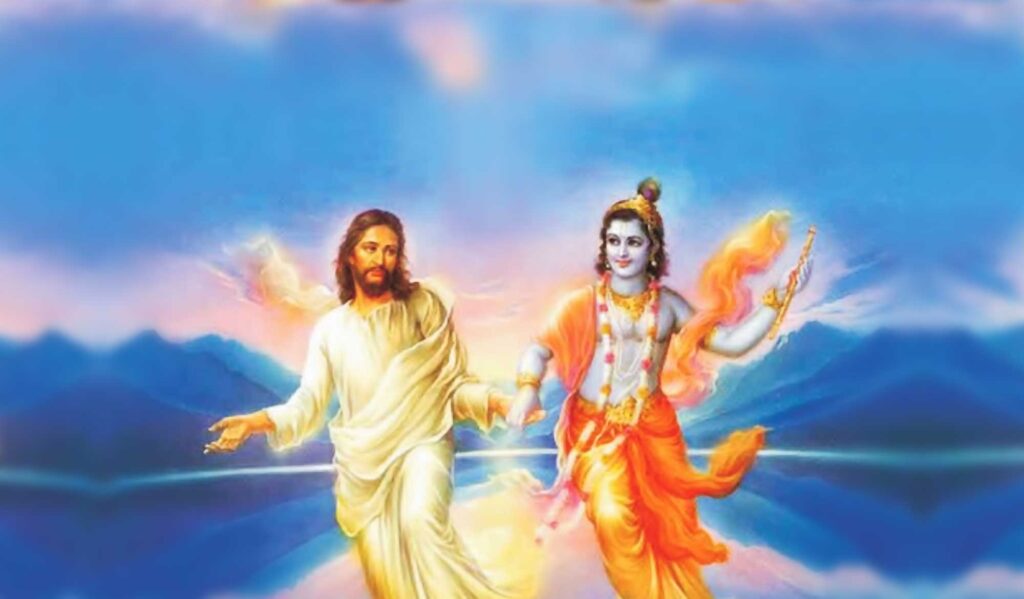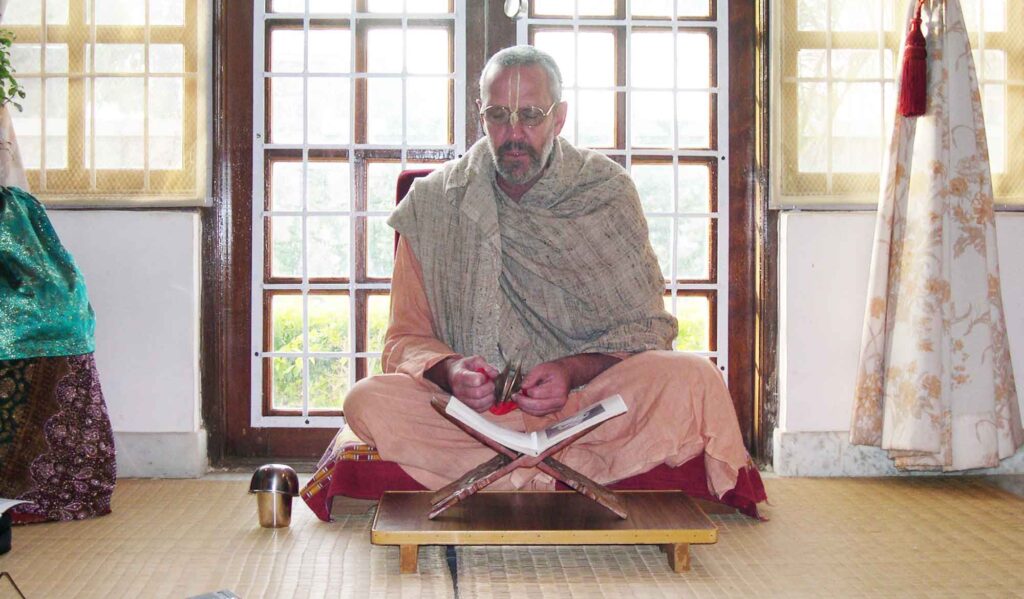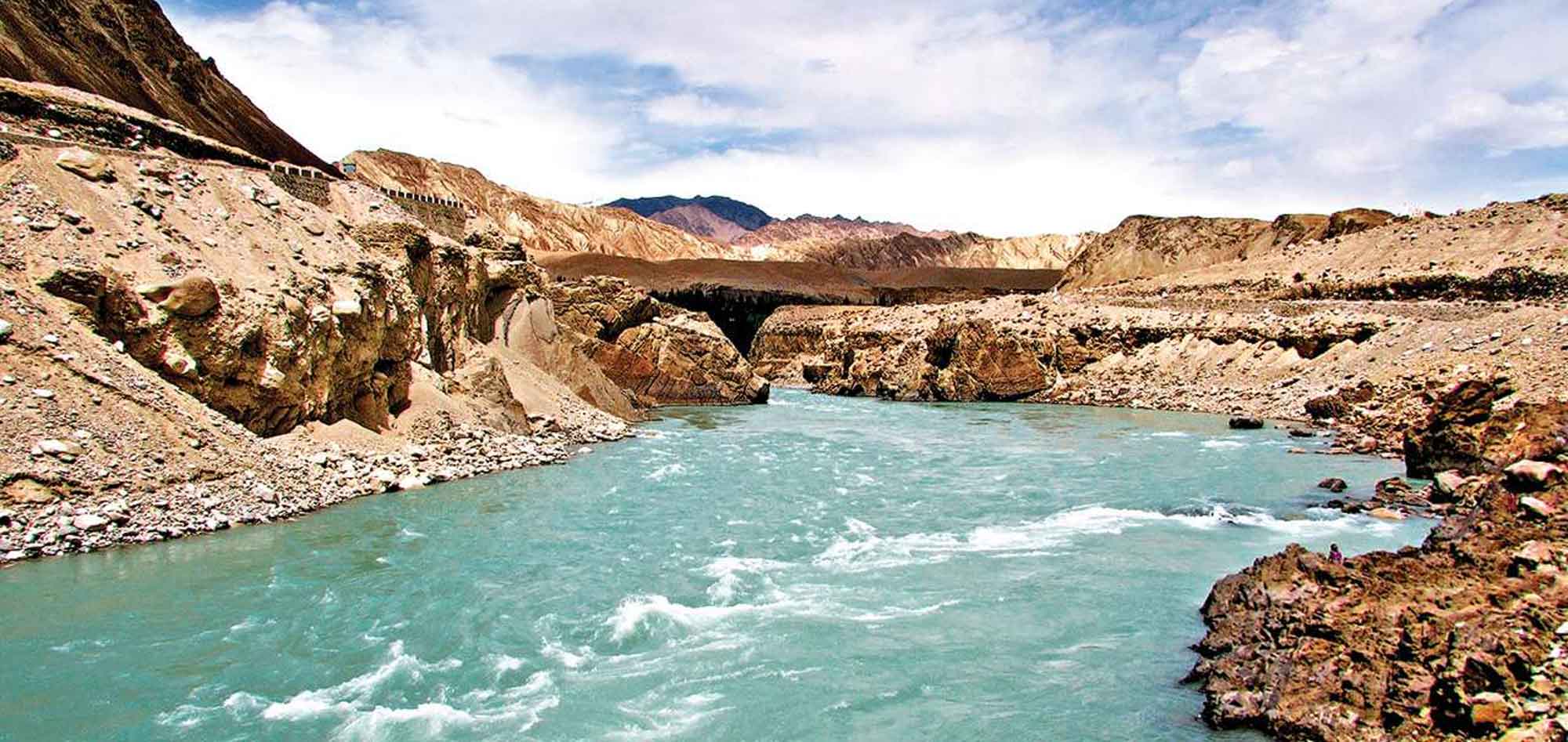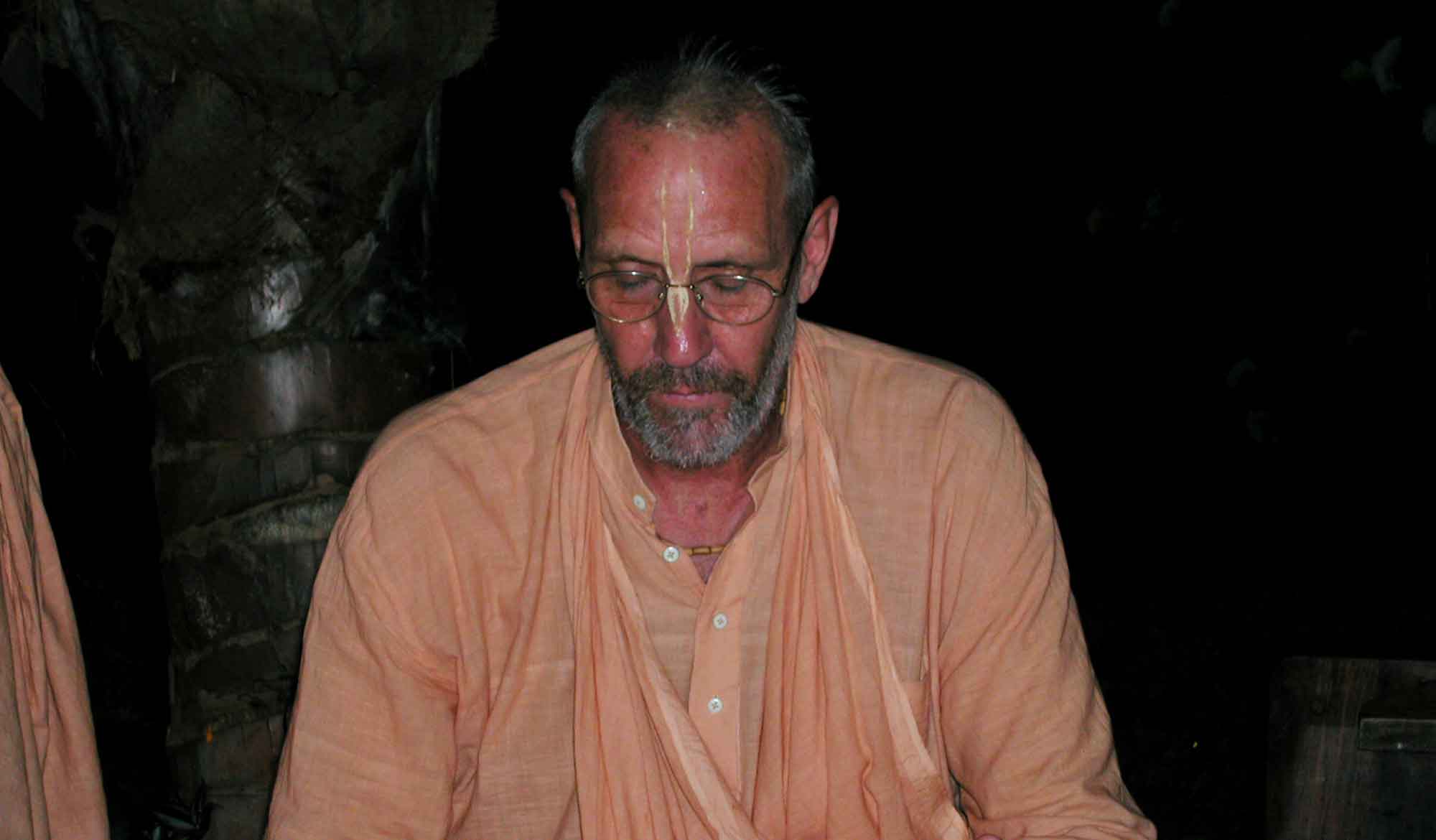by Swami B.G. Narasingha
In ‘Are We Reading Bona-Fide Books?’ written in 1998, Śrīla Narasiṅgha Mahārāja questions how we determine a book to be ‘bona-fide’ and specifically writes about the spurious book ‘Advaita Prakāśa’.
Are we reading bona-fide books or just the approved ones? Do the books we read have the BBT logo, or the ISKCON logo? Or do the books we read bear the name of our favourite svāmī or scholar — by what means do you determine if a particular book is actually a bona-fide Kṛṣṇa consciousness literature or not?
As far as I have seen it is a mixed bag of bona-fide and un-bona-fide literature lying on the devotee’s book shelves. I was shocked recently to see the book Advaita Prakāśa for sale in an ISKCON books store at Kṛṣṇa-Balarāma Temple in Vṛndāvana. An attractive title and a ‘good seller’ or so I was told. Unfortunately, this book Advaita Prakāśa is a top ranking production of the smārta community — a community diametrically opposed to the Gauḍīya sampradāya.
Advaita Prakāśa is allegedly authored by Śrī Īśāna Nāgara the household servant of Śrī Advaita Ācārya and is said to have been written by him shortly after the departure of Advaita Ācārya. However, according to Śrīla Bhaktivinoda Ṭhākura and Śrīla Bhaktisiddānta Sarasvatī Ṭhākura this book (Advaita Prakāśa) was actually written approximately 150 years ago at a time when the jāti-smārta brāhmaṇas of Bengal and others challenged that the gaura-gāyatrī used in the worship of Śrī Caitanya Mahāprabhu was unauthorized.
The concocted book Advaita Prakāśa was thus written in flowery words containing some favourable sentiments of the Gauḍīya sampradāya with regard to the Divinity of Mahāprabhu etc. Many of the Lords pastimes and the pastimes of Advaita Ācārya and His devotees are mentioned in Advaita Prakāśa — unfortunately the majority of those are simply ‘stories’ — being neither accurate nor containing the correct siddhānta. This flowery presentation was made to attract the Gauḍīyas to accept the book as an evidence in the debate. The crux of the attack on gaura-gāyatrī comes on page 151 when Acyutānanda (the son of Advaita Ācārya) asks his father, “Which mantra will be used in the worship of those Deities (Gaura-Nitāi at Ambikā-kālnā). Please tell me the truth, don’t keep it a secret.” Advaita Ācārya replies, “I don’t know whether you know, but Lord Kṛṣṇa Himself has descended in Nadīyā. He has covered His body with the bodily complexion of Śrīmati Radharani, just as a person appears different by wearing different dresses. Therefore, Mahāprabhu is worshiped by meditating on the ten syllable gopāla-mantra.”
This statement seems to be true — no doubt Śrī Caitanya is non-different than Kṛṣṇa, yet this statement has been rejected by our ācāryas. Without recognizing the special characteristics of Śrī Caitanya (His inner bhava being that of Rādhārāṇī) and addressing the Lord accordingly with the proper mantra (gaura-gāyatrī) one’s worship of Śrī Caitanya is incomplete. One cannot worship Śrī Caitanya without accepting or worshiping Śrī Nityānanda Prabhu. Similarly, one cannot worship the Deity of Śrī Caitanya without an appropriate mantra — that mantra is gaura-gāyatrī. Without this line of discrimination one cannot taste the mellow sweetness of the Divine Service of Śrī Caitanya Mahāprabhu. All is not one.
The strategy of the smārta community was that since the Gauḍīya sampradāya accepts the position of Advaita Ācārya as viṣṇu-tattva and the position of Acyutānanda the bona-fide (non-envious) son of Advaita Ācārya — therefore what transpired between these two shall be a crushing blow to the Gauḍīyas. If Advaita Ācārya does not consider it necessary to worship Śrī Caitanya Mahāprabhu with a separate mantra then who are we or anyone else to introduce such a thing, as gaura-gāyatrī. After all it was Advaita Ācārya who called Mahāprabhu to appear at Navadvīpa in Kali-yuga. This was there strategy of attack.
The smārtas thought that their concocted argument would be accepted. However, from the very beginning the authenticity of the book was in question. Mahātmā Totārāma Dāsa Bābājī Mahārāja, a leading Gauḍīya Vaiṣṇava living in Navadvīpa at the time contested that and all other arguments opposing the use of gaura-gāyatrī. In a public assembly, Bābājī Mahārāja rejected the so-called evidences of the smārta-brāhmaṇas and with reference to Śruti, Smṛti, Tantra, and Purāṇas he established the truth regarding gaura-gāyatrī.
At the beginning of the 20th Century (1911) the same smārta community again raised the same challenge – ‘gaura-gāyatrī is unauthorized!’
This time it was Śrīla Bhaktivinoda Ṭhākura and Śrīla Bhaktisiddhānta Sarasvatī Ṭhākura who rose to the occasion and defended the dignity of the Gauḍīya sampradāya by establishing the eternality of gaura-gāyatrī. At that time and on several occasions during that period both Bhaktivinoda and Bhaktisiddhānta wholesale rejected the book Advaita Prakāśa as a concocted evidence — a cheating publication. That the book contained sweet pastimes of Śrī Caitanya Mahāprabhu, Advaita Ācārya, and His devotees etc. was not the only consideration of our ācāryas mentioned above. The fact that Advaita Prakāśa contained damaging untruths was sufficient for its rejection. That is the way of stalwart discrimination — that was also the line of our Guru Mahārāja, A.C. Bhaktivedānta Svāmī Prabhupāda and that should also be the line of discrimination for all devotees who follow in his disciplic succession.
There are other apa-siddhāntas and food for sahajiyaism in Advaita Prakāśa such as the conception that only householders can worship the Deity (pp 163) — another concoction of the caste gosvāmīs. There is also the marriage of Īśāna, who was over a hundred years old at the time, and his afterward begetting many children — all on the order of Sītā — thus the concocted idea (popular in Bengal amongst sahajiyās) that one need not adopt abstinence in old age — one can simply create progeny even to one’s last days on earth.
Others many accept it as nectar but as far as Gauḍīya sampradāya is concerned — Advaita Prakāśa is an apa-sampradāya literature.
For the most part the community of devotees, especially those in the west, have very little knowledge or history of Gauḍīya sampradāya and its modern inception, the Gauḍīya Maṭha. Unfortunately, we do not care to take help or friendly advice from the Gauḍīya Maṭha. We think that we have the whole truth in the palm of our hand or at least in our ‘bona-fide’ books — yet we publish the literature of the opposition party.
On the other hand, it is actually our friendly and affectionate relationship with the members of the Gauḍīya Maṭha that will help us in such times of need, when proper discretion, discrimination, and historical accounts are necessary. Who are the opposers to Mahāprabhu’s movement and how to recognize them? When the opposers themselves are dressed in the cloth of our own clan how shall we know who they are?
I seriously doubt that the translators and publishers of the new edition of Advaita Prakāśa had even the slightest hint that there was something wrong with the book in the first place or surely they never would have published it. It was after all written in flowery words to attract the followers of Mahāprabhu — so how could they have known?
We should always keep connection with higher Vaiṣṇavas. We should not allow society boundaries to stand in our way and we should learn to trace the essence of the truth according to guru, sādhu, and śāstra. These three will give us a taste for transcendental mellows. We must know the truth according to mellow (rasa) and we should know those who possess that truth to be our true and only friends.
More Articles by Swami B.G. Narasingha
The Sacred River Sindhu/Indus
‘The Sacred River Sindhu/Indus’ was posted by Swami B.G. Narasingha on his blog, narasingha.net, on October 2nd, 2011. In this short article, Narasingha Maharaja explains the significance of the River Sindhu and his pilgrimage to it. This article was later expanded into a bigger article called ‘Sindhu River – How India Got Her Name.’
Instructing the Guru
This article “Instructing the Guru” was written in April 2018 by Śrīla Narasingha Mahārāja who answers a question concerning a previous article wherein a Vaiṣṇavī writes a letter to her dīkṣā-guru and explains to him about the importance of śikṣā. In response, a question was raised by a devotee about the etiquette of a disciple instructing her guru.
The Atomic Ray – From Uniform Consciousness to Individual Conscious Units
In “The Atomic Ray - From Uniform Consciousness to Individual Conscious Units” written in 1996 Śrīla Narasiṅgha Mahārāja discusses the constitutional position of the jīva, according to Bhaktivinoda Ṭhākura and Śrī Caitanya-caritāmṛta.













